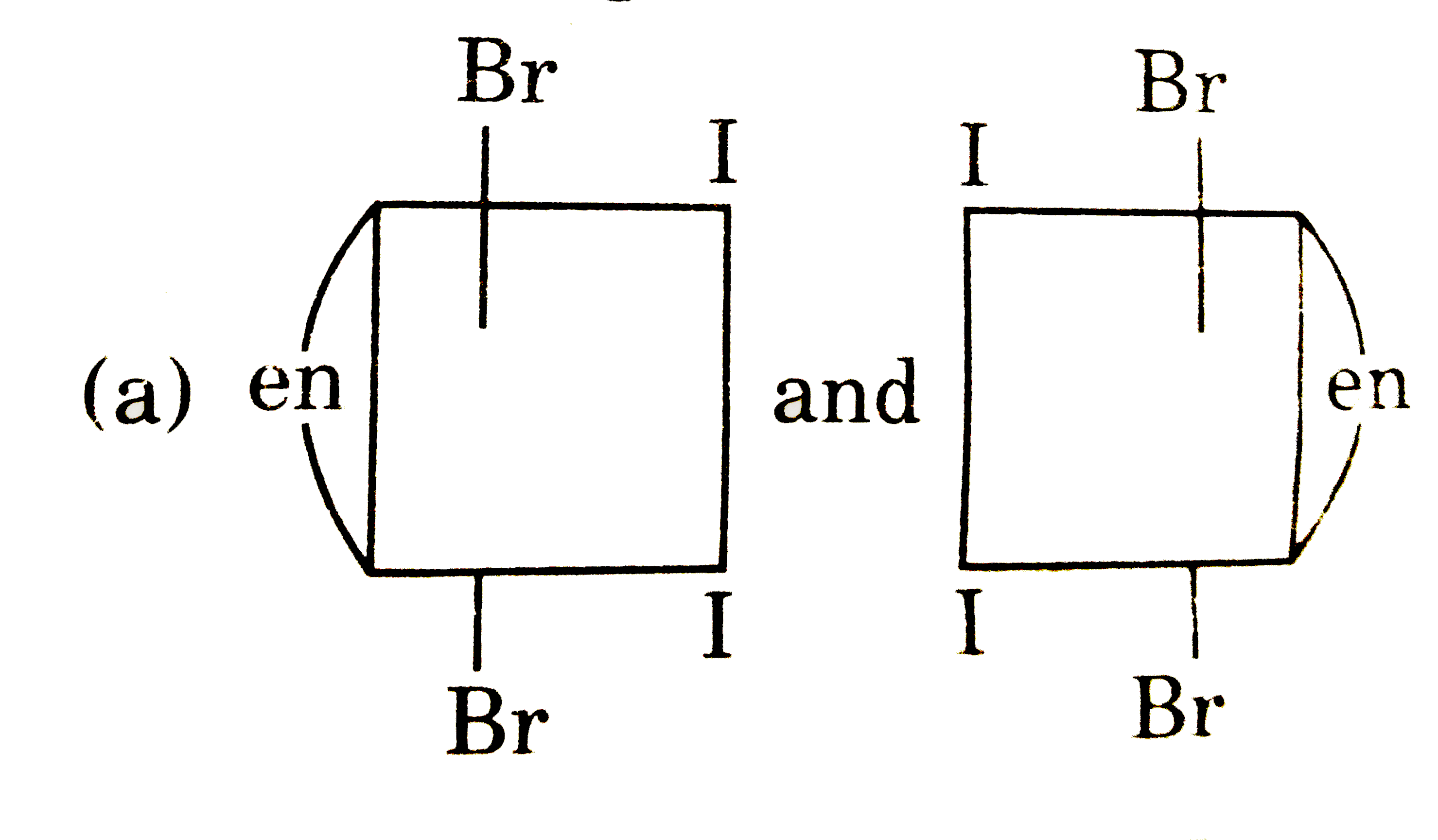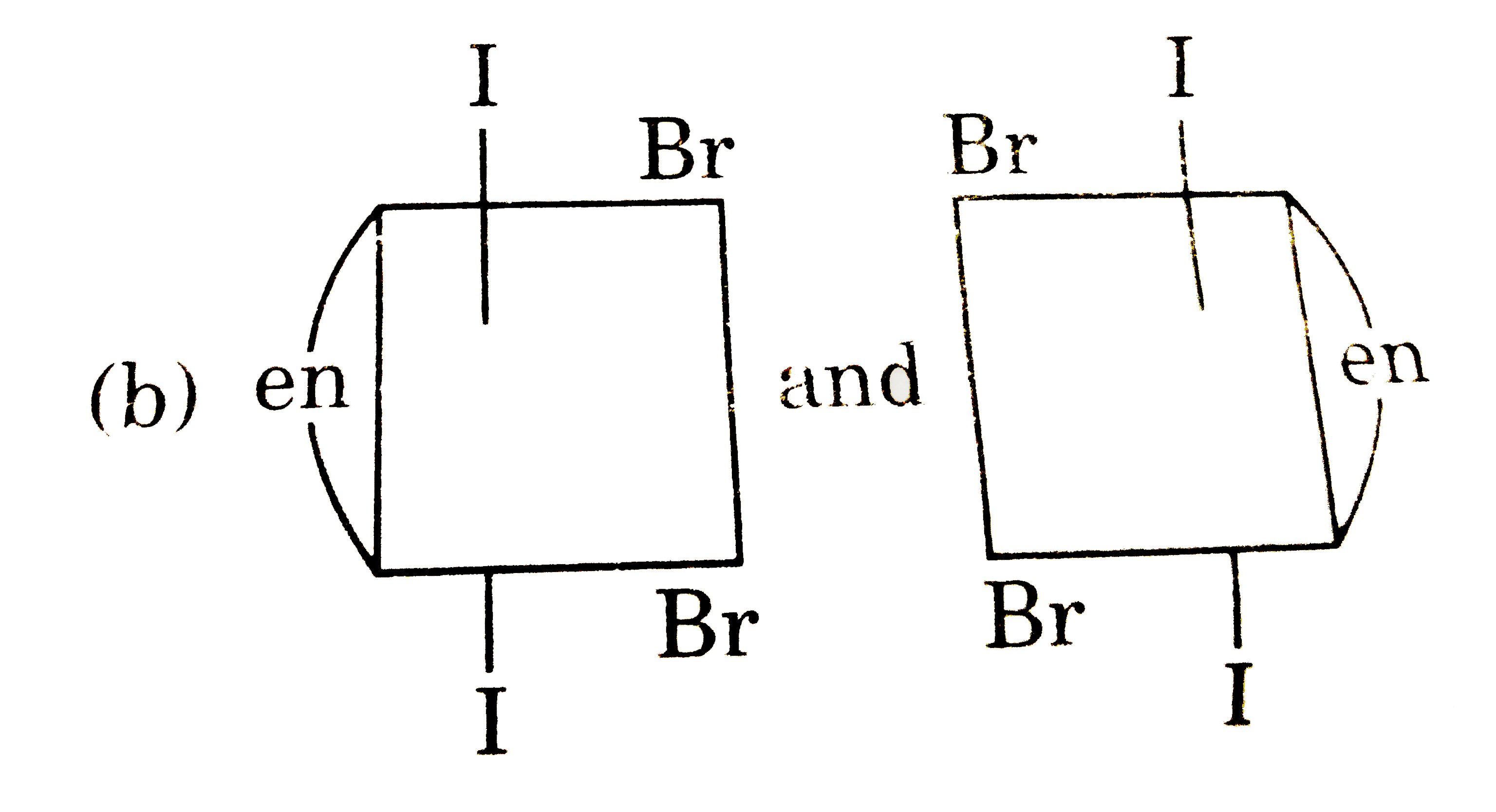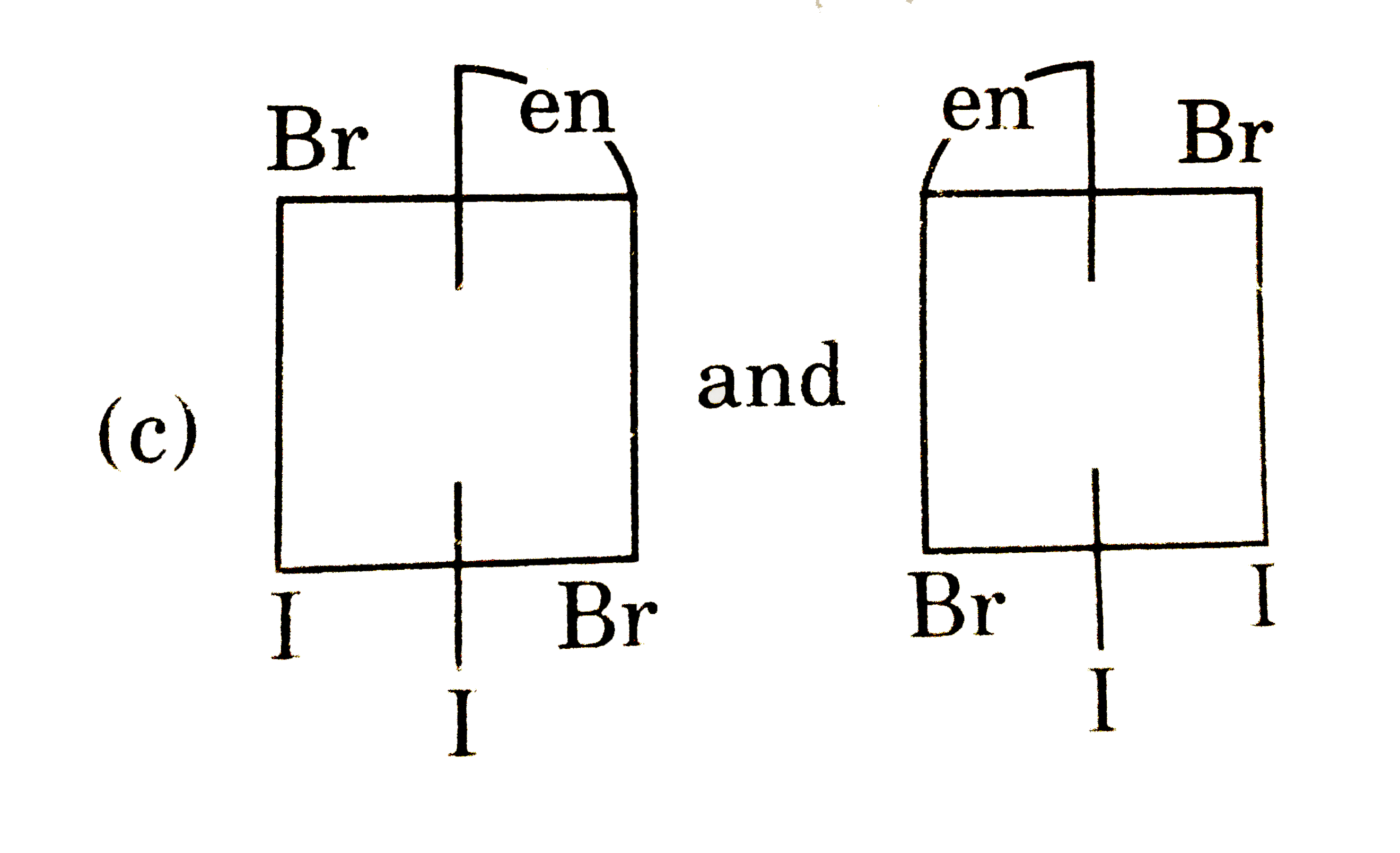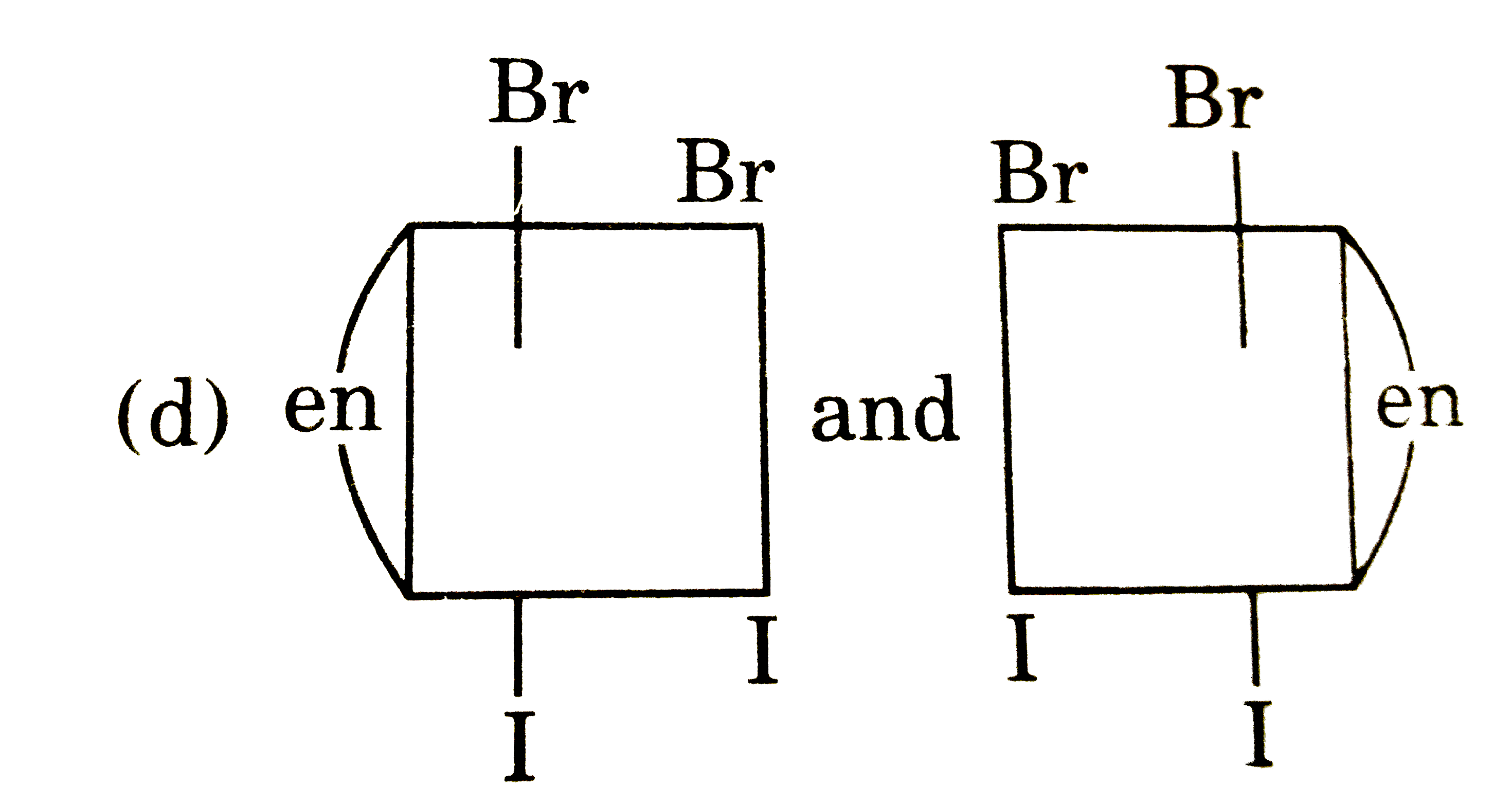The complex cation which has two isomers is :
[Co(H2O)6]3+
[Co(NH3)5Cl]+
[Co(NH3)5NO2]2+
[Co(NH3)5Cl]2+
The correct Answer is:C
To determine which complex cation has two isomers, we need to analyze the given options based on the types of isomerism they can exhibit.
1. Understanding Isomerism:
- Isomerism in coordination compounds can occur in various forms, including structural isomerism (such as linkage isomerism) and stereoisomerism (such as cis-trans isomerism).
2. Analyzing the Options:
- Option 1: Co(H2O)6^3+:
- This complex has six water molecules as ligands. Since all ligands are the same, it cannot exhibit any isomerism (neither structural nor stereoisomerism).
- Option 2: Co(NH3)5Cl^2+:
- This complex has five ammonia molecules and one chloride ion. The arrangement of ligands does not allow for any isomerism since the ammonia ligands are identical and the chloride is fixed in one position.
- Option 3: Co(NH3)5NO2^2+:
- This complex has five ammonia ligands and one nitro (NO2) ligand. The nitro ligand is ambidentate, meaning it can bind through either the nitrogen (N) or the oxygen (O). This allows for the possibility of linkage isomerism, resulting in two different isomers.
- Option 4: Co(NH3)5Cl^2+:
- This option is identical to option 2 and will not exhibit isomerism for the same reasons.
3. Conclusion:
- The only complex cation that can exhibit two isomers due to the presence of an ambidentate ligand (NO2) is Option 3: Co(NH3)5NO2^2+.
Final Answer:
The complex cation which has two isomers is Co(NH3)5NO2^2+.
---
- Isomerism in coordination compounds can occur in various forms, including structural isomerism (such as linkage isomerism) and stereoisomerism (such as cis-trans isomerism).
- Option 1: Co(H2O)6^3+:
- This complex has six water molecules as ligands. Since all ligands are the same, it cannot exhibit any isomerism (neither structural nor stereoisomerism).
- Option 2: Co(NH3)5Cl^2+:
- This complex has five ammonia molecules and one chloride ion. The arrangement of ligands does not allow for any isomerism since the ammonia ligands are identical and the chloride is fixed in one position.
- Option 3: Co(NH3)5NO2^2+:
- This complex has five ammonia ligands and one nitro (NO2) ligand. The nitro ligand is ambidentate, meaning it can bind through either the nitrogen (N) or the oxygen (O). This allows for the possibility of linkage isomerism, resulting in two different isomers.
- Option 4: Co(NH3)5Cl^2+:
- This option is identical to option 2 and will not exhibit isomerism for the same reasons.
- The only complex cation that can exhibit two isomers due to the presence of an ambidentate ligand (NO2) is Option 3: Co(NH3)5NO2^2+.
The complex cation which has two isomers is Co(NH3)5NO2^2+.
Topper's Solved these Questions
Similar Questions
Knowledge Check
The complex ion has two optical isomers. Their correct configuration are :
A B
B C
C D
D
The complex of ETS which has two copper centres associated with it is:
ASuccinate dehydrogenaseBCytochrome a−a3 complexCCytochrome bc complexDCytochrome reductase complexThe diamagnetic complex which has two geometrical and 4 optically active isomers is :
A[Co(gly)3]B[Pt(en)2Cl2]2+C[Co(en)3]3+D[Fe(Ox)3]3−
Which complex ion has cis and trans isomer ?
View SolutionConsider the following reaction and statements:
[Co(NH3)4Br2]++Br−→[Co(NH3)3Br3]+NH3
Two isomers are produced if the reactant complex ion is a cis-isomer
Two isomers are produced if the reactant complex ion is a trans-isomer
Only one isomer is produced if the reactant complex ion is a trans-isomer
Only one isomer is produced if the reactant complex ion is a cis – isomer
The correct statements are
View SolutionWhich complex compound will give four isomers:
View SolutionWhich of the following complex ions has geometrical isomers?
View SolutionFour statements for the following reaction given below [CoCl2(NH3)4]+→[CoCl3(NH3)3]+NH3
(P) Only one isomer is produced if the ractant complex ion is a trans isomer
(Q) Three isomers are produced if the reactant complex ion is a cis isomer
(R ) Two isomers are produced if the reactant complex ion is trans isomer
(S) Two isomers are produced if the reactant complex is cis isomer
The correct statements are :
View Solution
